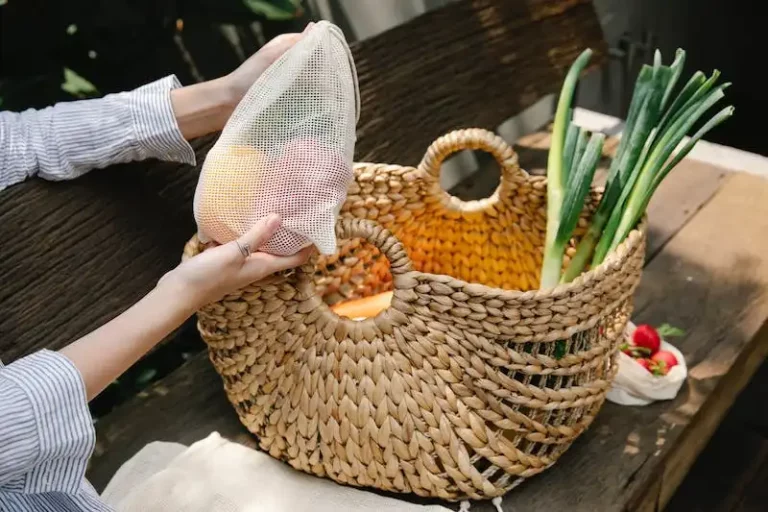Xerophyllum plants, also known as bear’s breeches, are beautiful and unique species that thrive in well-drained, sunny areas. These plants love sunlight and can tolerate warmer temperatures, making them perfect for gardens in many regions. Whether you want to grow them indoors or in your garden, there are several essential steps you must take to ensure their proper care and growth.
To start, you need to choose a suitable pot or plant them directly into your well-draining garden soil. Xerophyllum plants must be planted in well-drained soil to avoid overwatering and root rot. When planting in a pot, make sure it has drainage holes and use a well-draining potting mix. Xerophyllum plants require at least 3 to 5 hours of direct sunlight each day, so choose a sunny spot in your garden or place them near a south-facing window indoors.
Once planted, it is important to water your xerophyllum plants properly. These plants do not require frequent watering and can tolerate dry conditions. Water them deeply once a week, allowing the soil to dry out between waterings. Be sure to check the moisture level of the soil by inserting your finger about an inch into the soil. If it is dry, it is time to water. Avoid overwatering, as this can lead to root rot.
In terms of temperature, xerophyllum plants are most comfortable in moderate temperatures between 50°F and 75°F (10°C and 24°C). They can tolerate slightly cooler temperatures in the winter but may require protection from frost. If you live in an area with harsh winters, consider growing xerophyllum plants as potted houseplants that can be moved indoors during the colder months. Just make sure to provide them with enough light and avoid placing them near drafty windows or vents.
Pruning is also an essential step in caring for xerophyllum plants. Prune any dead or damaged leaves or stems to keep the plant healthy and promote new growth. Pruning should be done in early spring or late summer. You can also trim back any overgrown or unruly branches to shape the plant as desired.
Xerophyllum plants are generally pest-free, but they can be susceptible to aphid infestations. If you notice aphids on your plants, try spraying them with a mixture of water and mild soap. Repeat this process several times to fully eliminate the pests.
In conclusion, growing xerophyllum plants can be a rewarding experience. These beautiful plants are easy to care for and can thrive both indoors and outdoors. By following the steps outlined above, you can ensure their proper growth and enjoy their unique beauty in your garden or home.
How to Grow and Care for Bear’s Breeches
Bear’s Breeches, also known as Acanthus mollis, is a beautiful and unique plant that can add a touch of elegance to any garden or landscaping project. The leaves of this plant are large and green, while the flowers are tall and white, resembling tiny beards or squaw breeches.
If you want to grow Bear’s Breeches in your garden, here are some tips to follow:
1. Choose the right location: Bear’s Breeches thrive in well-drained soil and need a sunny location to grow well. Make sure to plant them in a spot that receives plenty of direct sunlight.
2. Prepare the soil: Prior to planting, prepare the soil by adding organic matter such as compost or well-rotted manure. This will improve the soil’s fertility and drainage.
3. Plant in early spring: It is best to plant Bear’s Breeches in early spring before the growing season starts. This will give the plant enough time to establish its roots before the summer heat kicks in.
4. Watering and mulching: Bear’s Breeches prefer to be kept slightly moist, but avoid overwatering as it can lead to root rot. Water the plant regularly, especially during dry periods. Apply a layer of mulch around the base of the plant to help retain moisture and suppress weed growth.
5. Pruning and deadheading: Regularly remove any dead or yellow leaves to keep the plant looking neat and healthy. Deadhead the flowers once they have finished blooming to encourage more blooms and prevent the plant from self-seeding.
6. Protect from harsh conditions: Bear’s Breeches can be sensitive to harsh winter climates. In colder regions, consider providing protection by covering the plant with mulch or moving container-grown plants inside during winter.
7. Propagating Bear’s Breeches: Bear’s Breeches can be propagated through division or by collecting and planting seeds. Divide mature plants every few years to control their size and promote healthy growth.
In summary, Bear’s Breeches are relatively easy to care for and can thrive in a well-draining garden or landscape. They add an interesting focal point with their distinctive foliage and towering white flowers. Follow these guidelines, and you will be rewarded with a stunning and unique addition to your outdoor space.
Bear’s Breeches Care
The Bear’s Breeches plant, also known as Acanthus mollis, is a beautiful perennial that can add a touch of elegance to any garden. However, it does require proper care to thrive and reach its full potential. Here are some important steps to follow for successful Bear’s Breeches care:
1. Plant in well-drained soil: Bear’s Breeches prefer soil that drains well to prevent waterlogged roots. Make sure the soil is loose and provides good drainage to avoid rotting roots.
2. Choose a sunny spot: Bear’s Breeches thrive in full sunlight and require at least 6 hours of direct sunlight each day. Choose a location in your garden that receives ample sunlight and is not in the shade of other plants or structures.
3. Provide regular watering: While Bear’s Breeches are drought-tolerant plants, they still need regular watering to stay healthy, especially during hot and dry periods. Water deeply, allowing the water to soak into the soil for a few minutes.
4. Avoid overwatering: Overwatering can cause root rot and other issues for Bear’s Breeches. Be cautious not to water them too frequently or excessively. Let the soil dry out slightly between waterings.
5. Remove seedlings and invasive plants: Bear’s Breeches can produce many self-seeded seedlings, and they can also be invasive in some areas. It’s important to remove these seedlings and control their spread to prevent them from taking over your garden.
6. Prune to maintain shape: Bear’s Breeches can grow quite tall and wide, so occasional pruning may be necessary to maintain a more compact shape. Remove any dead or damaged leaves or stems to keep the plant looking tidy.
7. Protect from frosts: While Bear’s Breeches are generally hardy in temperate climates, they may need protection from severe frosts. Consider covering them with mulch or a protective cloth during the winter months to insulate them from extreme cold.
8. Fact-check online information: When researching Bear’s Breeches care, it’s important to fact-check the information you find online. Not all sources may provide accurate or reliable information, so double-check with reputable botanical resources.
By following these care tips, you can help your Bear’s Breeches plants thrive and enjoy their lush foliage and unique flower spikes. Remember that each garden may have specific conditions and needs, so it’s essential to adapt your care routine accordingly.
Warning
Growing Xerophyllum plants can be challenging due to their specific care requirements. It is important to note that these plants are adapted to survive in drought conditions and prefer well-draining soil. Here are some important warnings and considerations to keep in mind:
- Watering: Xerophyllum plants, such as Goat’s Beard, do not tolerate excessive watering. Overwatering can lead to root rot and other diseases. It is essential to ensure the soil is slightly moist but not soggy. Avoid watering the foliage or leaves to prevent fungal issues.
- Temperature: Xerophyllum plants are generally hardy and can tolerate a wide range of temperatures. However, extreme heat or cold can stress the plants. Provide protection from harsh weather conditions, especially during winter. Avoid placing them in direct sunlight during the hottest parts of the day.
- Fertilizer: Xerophyllum plants do not require heavy fertilization. A balanced, slow-release fertilizer applied according to the label instructions will be sufficient. Avoid over-fertilizing, as it can lead to excessive foliage growth and weaker plants.
- Invasive Species: Some species of Xerophyllum plants can be invasive in certain areas. Before planting, research if the specific species you intend to grow is considered invasive in your region. Take appropriate measures to prevent the spread of these plants and protect the native biodiversity.
- Facial Hair: While it may be amusing, Xerophyllum plants, such as bearded Goat’s Beard, do not actually have facial hair like humans. The term “beard” refers to the fluffy, hairy appearance of the plant’s flowers.
- Goatsbeard Genus: Xerophyllum plants belong to the genus Xerophyllum, not the Goatsbeard genus. The confusion arises from the common name “Goat’s Beard,” which is used for several different plant types.
- Winter Care: Xerophyllum plants are generally winter hardy, but providing some protection during extreme cold helps ensure their survival. Mulching the soil around the plants and adding a layer of straw or leaves can insulate the roots and conserve moisture.
Remember, Xerophyllum plants require special care and attention. If you have any questions or concerns about growing these plants, consult a knowledgeable gardener, or search online for more detailed care articles specific to your Xerophyllum species.

